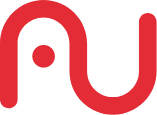College affordability is back in the spotlight after several surveys and statistics about college loan forgiveness and rising tuition rates made their way to The Chronicle of Higher Education’s July issue.
However, those who’ve advanced their education in the past 10 years have had this at the forefront of their minds, because they’re likely still paying off that piece of paper.
“Adjusted for inflation, average tuition and fees at public four-year institutions increased 150% over the past three decades,” writes reporter Audrey Williams June.
There is also a correlation between rising tuition and the average spending of marketing dollars to get more students. It’s getting more expensive to attract students; therefore, the cost of tuition rises.
As institutions try to attract more diverse student populations, they must also diversify their marketing efforts to reach new populations in non-traditional ways. This is an investment – often a bigger one than higher ed marketers are used to – requiring research, then implementation, collecting feedback on results, and beyond.
Though a federal free college plan is dead in Congress, many states have adopted tuition-free community college programs. Colleges and private businesses are partnering in creative ways to offer scholarships to incentivize and financially reward completion – particularly in support of career readiness in high-demand fields. Here in Virginia, this looks like the Virginia Community College System’s G3 and FastForward programs and the Virginia Ready Initiative. Connecticut’s PACT (Pledge to Advance CT) funding covers the gap between federal and state grants students receive, as well as community college tuition and fees. Tennessee Promise is both a scholarship and mentoring program that provides high school grads free tuition at community and technical colleges.
The community college stigma is slowly fading as workforce development programs and low-cost credentials are rising in popularity. This gets students on a fast track when they finish a one- or two-year program and can get right to work.
We’re also seeing more personalization at community colleges, including night classes and virtual learning that can accommodate schedules. Tactics like direct mail are making a comeback, with the ability to personalize messaging and track effectiveness based on online behavior. New content management systems allow for an Amazon experience on college websites, with students able to take more control of their online registration and completion of classes.
Aside from online accessibility, AccessU Faculty member Monica Gomez says having the personal touch of a one-on-one advisor goes a long way.
“Students who are younger and coming from high school may not have the focus of what they want to do for the rest of their lives,” says Gomez. “It’s very important they talk to an advisor to set expectations, about scholarships, and have more guidance overall when it comes to financial aid and other factors.”
Marketers should be careful not to overwhelm potential students with tons of writing on flyers and pamphlets that can go overlooked and underread. Gomez says creating step-by-step videos and designing direct how-to guides can be more impactful.
This could include tutorials through YouTube, TikTok, and reels on Instagram and Facebook.
For AccessU Faculty member Ricky Parker, reading about the latest statistics on college tuition rates is very on-pulse with what he’s been hearing about affordability from his students.
“We’re entering a place in higher ed where there’s no longer a mandatory formula of going to get your bachelor’s, master’s, and doctorate,” says Parker. “I’m not saying the bachelor’s degree is going to be obsolete, but I think a lot of other things can complement it.”
COVID-19 brought light to virtual learning opportunities and the benefits, for some, of remote learning and saving money on room and board. However, students often need more direction about what they could do with a degree once they have it, so they will be inclined to apply in the first place.
“We need to push students to find their path and be more intentional. There is a cost to college; people shouldn’t approach college lackluster,” says Parker.
Parker says a great option for marketers is to show clear pathways from majors to careers. Students aren’t always aware of the roadmaps of their degrees. This marketing personalization aids in retention to keep students engaged on the road to completing their education. Consider the value of communicating a student’s ROI before, during, and after enrollment as well as after graduation to show progression. There’s also value outside the classroom students can take advantage of long after graduation. Alumni networks are great referral programs that can be leveraged to serve as advocates and some of the best ambassadors. Show students that when they register for college, they’re opening doors for themselves in their career and to a career support system.
Marketers should consider the “customer lifecycle” of students. The cost of college often isn’t on students’ minds until they are high school seniors, but the topics surrounding college loom as early as elementary and middle school for students and parents. Right now, there is too much focus put on teens. Marketers should communicate with students sooner about career and education opportunities. A student in elementary school is going to absorb that information so much earlier, with more time to form critical thoughts around that decision.




